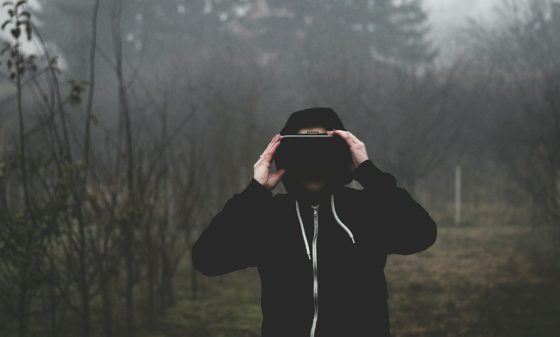
Photo: Pixabay
“Just so I understand this correctly, it’s possible to experience death in virtual reality. To experience what it’s actually like to die, in the brutalist of ways even. And as our senses develop — touch, smell, things like that — this experience is only going to get more realistic.”
The woman nodded in response. We were sitting across from each other in a large yurt that overlooked the Pacific Ocean, the door flap of the enormous tent making a gentle slapping sound in the wind as six of us sat cross-legged in a circle well past midnight.
The topic: virtual reality and consciousness.
“But you have to consider another scenario,” she said, leaning in further.
“What if experiencing death enabled us to face our greatest fear, and what if that wasn’t a bad thing? What if experiencing death gave us a greater appreciation for life, maybe even enabling us to live with more appreciation, empathy, and gratitude?”
Last fall, we gathered at the Esalen Institute in Big Sur for Digital Raign, a week-long summit created for bringing together industry folk (and curious minds – me) in the virtual, augmented and mixed reality worlds to discuss the state of the industry.
*
According to a report by Canalys, over 2 Million VR headsets were shipped in 2016. While this is a notable number, it remains small in comparison to the hundreds of millions of smartphones sold each quarter.
Still, we are on the brink of an industry that is set to change the world as we know it.
With last year’s launch of Google Daydream and Samsung Gear VR at under $80each, wider accessibility to VR is finally possible. And for $15, you can buy Google Cardboard or even build a headset on your own for free. (Hint: it involves cardboard, bi-convex lenses, magnets, velcro, and a rubber band.)
The biggest setback that prevents VR from truly taking off is content. VR content is expensive to produce and funding usually comes from supporters who see enough traffic to turn around and monetize big on advertising.
Users show up for content. And more users = more traffic = sponsors, who in-turn fund content. It’s a chicken-egg scenario.
Music video director Chris Milk (Kanye West, Arcade Fire) is out to change that. Milk has dabbled in virtual reality concepts early on and in 2014 co-founded a production studio with artist and entrepreneur Aaron Koblin.
His first TED talk on the topic was in 2015, entitled “How virtual reality can create the ultimate empathy machine.”
“VR is the last medium for storytelling, because it closes the gap between audience and storyteller. -Chris Milk
Linden Labs, the founders of Second Life, are also betting big on VR with the upcoming launch of a new platform.
Variable Labs is one of many other companies dedicated to creating immersive VR experiences in order to help individuals foster empathy, develop soft skills, and help change behavior through therapeutic techniques. Last year, it was also announced that Reel FX was teaming up with Facebook’s Oculus for a $1 million ‘VR for Good’ initiative dedicated to inspire social change.
From spirituality and healing to education, work, tourism, and of course entertainment, the possibilities in virtual reality are endless.
VR is too new for us to fully understand the full scope of its implications, but it’s good to know that as it emerges as a platform for mass-consumption the social good element is breaking through sooner than it did in its predecessors, despite the outliers.
And, as early consumers and content creators, we have the unique opportunity to help decide which direction it goes in.
Whether it be transformative and uplifting, or dark and potentially traumatic.
The time to call it is now. And the great news is, good things are on the horizon.
More:
Chris Milk, Virtual Reality as an Art Form (TED talk)